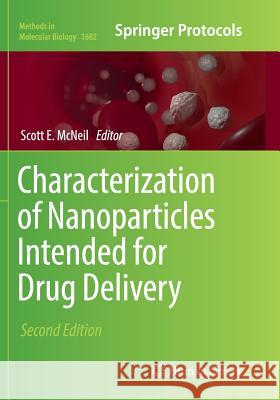Characterization of Nanoparticles Intended for Drug Delivery » książka
topmenu
Characterization of Nanoparticles Intended for Drug Delivery
ISBN-13: 9781493984602 / Angielski / Miękka / 2018 / 256 str.
Wydawca:
Humana Press
Seria wydawnicza:
Język:
Angielski
ISBN-13:
9781493984602
Rok wydania:
2018
Wydanie:
Softcover Repri
Ilość stron:
256
Waga:
0.49 kg
Wymiary:
17.91 x 25.3 x 1.45
Oprawa:
Miękka
Wolumenów:
01
Dodatkowe informacje:
Wydanie ilustrowane











